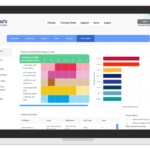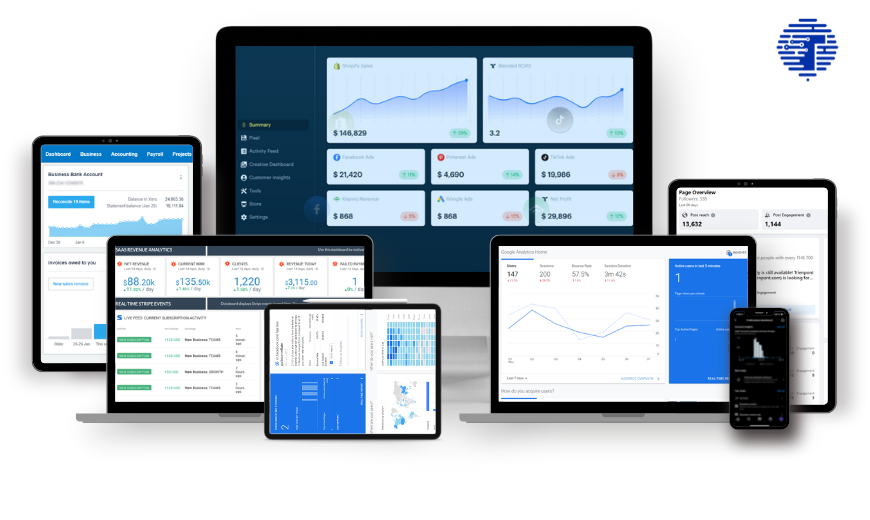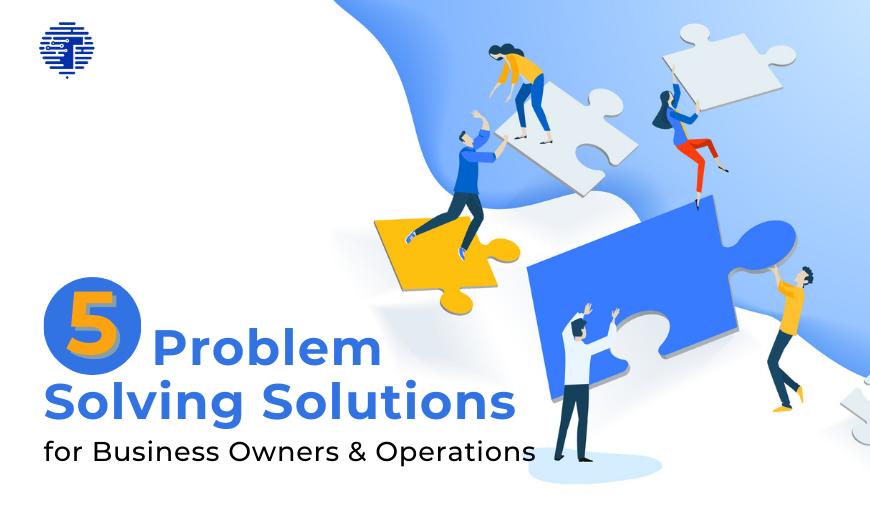a? Breathe life back into your business with custom software tools
One of the number one complaints we get from scaling business owners and operators is that they are drowning in data. They rely on multiple data sources, i.e ERPs, CRMs, accounting software, stock management systems, SEM and SMM advertising platforms etc.
They often have neatly presented metrics within their own platform, which necessitates switching back and forth between tabs trying to form a cohesive picture of:
- How much is being spent?
- Where is it being spent?
- Are we actually making money?
- Should I just give it all up now??
This data analysis paralysis is why we see the rise and rise of SaaS products that seek to put all this key information in one place. Depending on your industry or specialisation, there are usually off the shelf solutions that try and put all key metrics in one easy to access location in an aesthetically pleasing format.
But, one size all solutions don’t fit every business, especially yours.
There comes a time in every business leader’s life when they need to stand out from the crowd and stop trying to solve their unique problems with an off-the-rack solution.
Enter Custom Dashboards and Bespoke Business Tools.
Now, the concept seems simple. Put all the information you need in one place, complete with easy to read graphs and calculations that give the exact data you need to make informed business decisions. This is your dashboard, which will no doubt make your decision making processes a lot easier. In some cases, you might need something a little more complicated.
Now you finally have all the information you need to work effectively in one place! But, it would be even better if you could take action on this data all through one intuitive platform. Rather than a “one-way” stream feeding you eyes with relevant data, it would be even better if you can take action on t(and the system it came from) all through one custom platform.
The work that goes on behind the scenes is usually more complex and time consuming than imagined.

What makes it complicated?
Companies like Facebook and Google want to be your one stop business solution. They don’t want you using competitors, obviously, but they do realise to compete in a global market you need to play nicely with others. This is where Application Programming Interfaces (APIs) come into play.
If you want to learn more about APIs, we broke down what they are, how they work, and gave some real world examples in this content series:
But if you just want the quick and dirty, APIs allow data sharing between multiple applications through push and pull requests that allow our amazing software developers to calculate, organise and display your crucial data to empower your business operations.
Why are custom software solutions becoming more popular?
As touched on earlier, decision makers rely on an ever increasing number of inputs from multiple non-friendly sources. On top of this, the data provided from these sources is often not giving you accurate information.
A good example of this is with Facebook Business Manager. When pulling maximum spend cap data from Facebook’s API, our client’s information was incorrect. Instead, it was discovered we had to pull data from two separate figures and perform our own calculations to display the correct sum.
What if I want to do more than just display data?
The name “Dashboard” is a little misleading. Really what we build often are custom Bespoke Business Tools with multiple functions and features depending on your business needs. The beautiful thing about custom software is that we build your product from your requirements.
Some examples of recent projects we have built are:
- A customised survey tool that allows partners and clients to collect user feedback and data and present this data through a number of reports and key metrics for the loyalty program of a mass rapid transport conglomerate;
- A client/user management, P&L dashboard and Facebook ad management tool for a specialised, high volume social media advertising solutions provider;
- A display and management system for a municipal solar powered LED street light provider that displayed power production and consumption data, and allowed resources to be managed from a centralised location.
Although the industries, functions and features of these three examples were quite different, they all had one thing in common:
Off the shelf software did not meet their unique requirements.
How long will it take to build my project and how much will it cost?
As with all software development projects, this kind of question would often be met with “well, how long is a piece of string?”. Without understanding your business requirements it is difficult to estimate cost.
But, we can give you some ballpark estimates. A custom informational dashboard can start from 4 weeks and will likely cost around $5,000 – $10,000 USD. There can also be costs charged by API providers, i.e. Google charges a few cents for some data for Firebase users, and has some data storage charges. Generally these won’t be noticeable unless you have a large volume of active users.
Now, for efficiency-boosting simple applications the development time would start from 2 – 3 months, and cost around $20,000 – $50,000 USD, which is a small price to pay for your own software and no more annoying monthly subscription fees. More complex projects will of course take longer to build, and be more expensive. If cost is an issue, we often add features in future software releases and updates so the cost is spread over a long period of time, which helps if your business is cash flow sensitive.

What are the hidden costs of software development?
Often we hear about the hidden costs of custom software development. These can be broken down into four main categories:
- Maintenance costs
- Hosting costs
- Training costs
- New features and upgrades
A deep dive into each of these costs would necessitate a whole ‘nother article (stay tuned!), but you need to be aware of each.
- Maintenance costs
A figure often used is that your annual maintenance costs for a software project will be equal to about 20% of the development costs. These can be simple bug fixes (they always pop up in software projects, otherwise Microsoft wouldn’t have thousands of support personnel spread around the world!), or changes with the APIs from third party providers.
- Hosting costs
These are generally straightforward and are based on data usage. Most systems we build don’t have data intensive designs or requirements, and more data generally = more users, so revenue should increase faster than your hosting costs.
- Training costs
When we hand over a software product to the excited new owner, we give training on how to use it. Also, we usually design it based on client requirements, or we can have our in-house UX/UI team create the most intuitive interface to create easy-to-use software with minimal training and onboarding times.
- New features and upgrades
If new opportunities arise or another third party software solution is added to your arsenal, normally we can incorporate new data sources or features into your existing product. During the development process or during maintenance and support these are handled through either Change Requests or as a new standalone project.
What if my business needs are shared by others but there isn’t an existing solution for us?
Well, if you have a great product concept, you know what you need to achieve product-market fit, and a ready customer base, why not build your own SaaS solution?
We help business owners add additional revenue streams and value to their business by creating multi-tenant or “whitelabel” Dashboards and custom business tools. This is also a great option for employees who see the opportunity and want to make the leap to entrepreneurship. Why not build something in the niche you know better than anyone else rather than taking risks in an unknown world?
In these situations, you probably need an MVP. (read more about MVPs here!)
You can use this MVP within your own business and with other hand-picked beta testers before going to market. This allows your product to be refined and improved based on real world use, so when you launch you already know you have a tested and proven solution!

What do I need to get started?
It can be very simple to get started on your own Custom Dashboard or Bespoke Business Tools. You only need three things to get started:
- A vision (don’t worry, we can refine this together);
- Problems that you are committed to solve;
- A realistic budget and timeframe.
We work with you to understand your business requirements and formulate ways to automate mundane, repetitive or confusing tasks to free up precious time and resources. Luckily, we have a team of specialised translators that turn your vision into a list of technical requirements and features into hundreds of thousands of lines of code to create intuitive products that solve your business needs.





